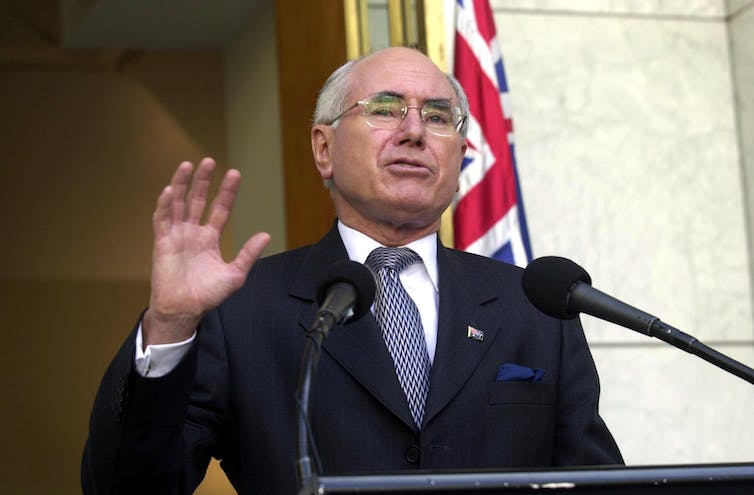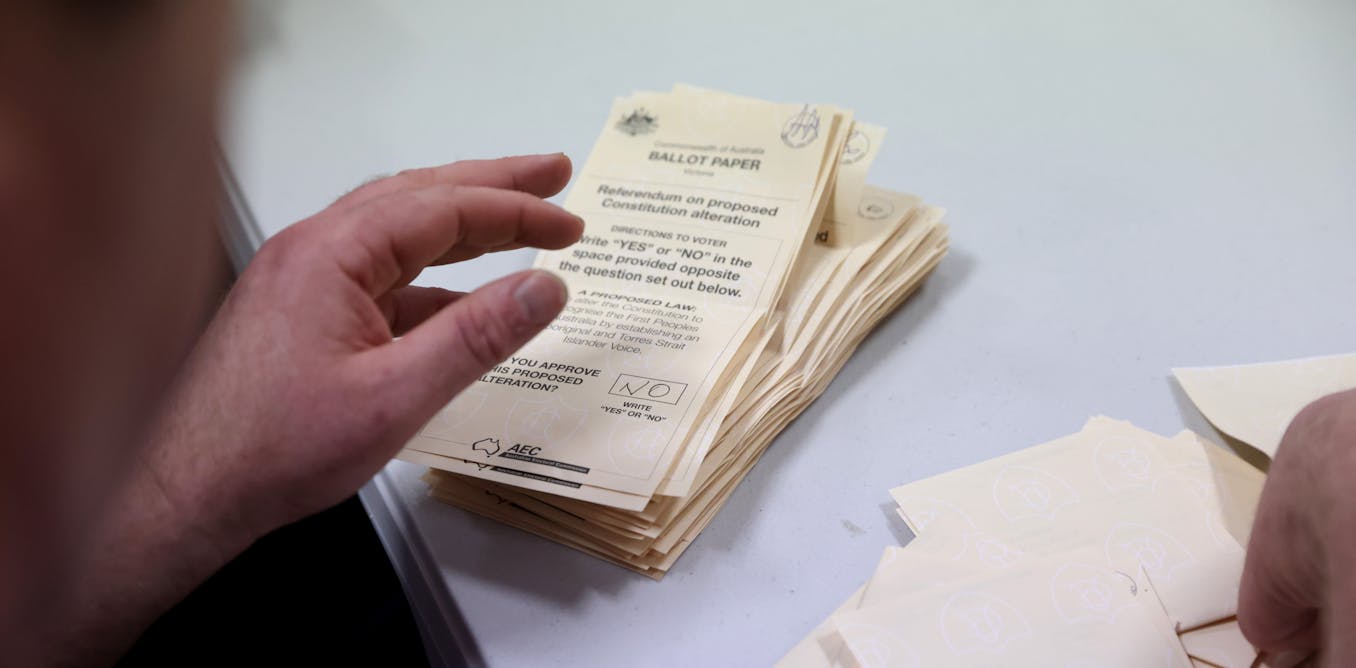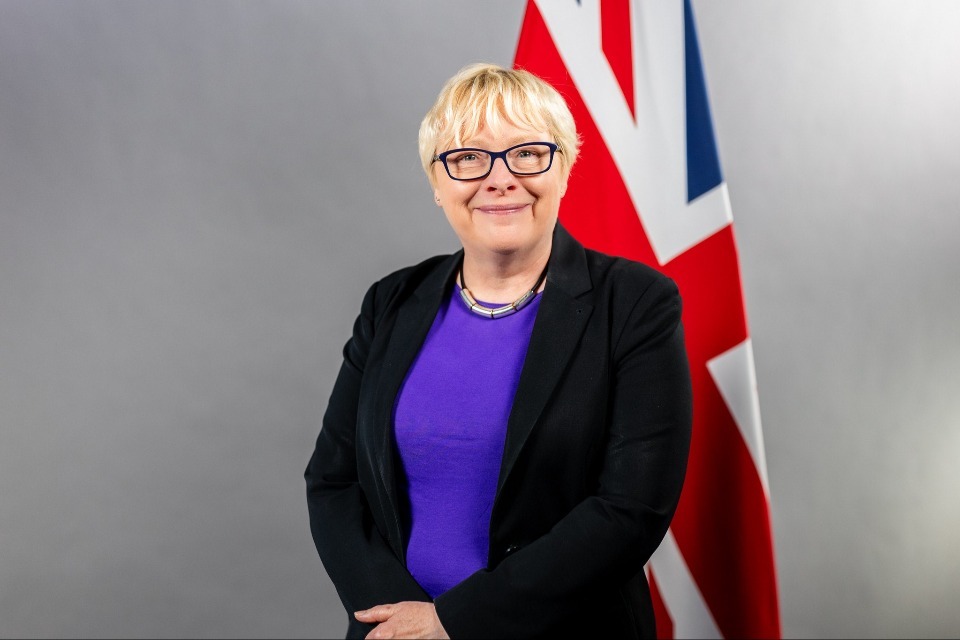By far the most significant decision the Howard government made in 2003 was to support the invasion of Iraq. Journalists and historians have long maintained there was no submission to full cabinet weighing the pros and cons of the Australian intervention. Cabinet papers from 2003 released today by the National Archives of Australia confirm this.
While the Howard government had many other important issues to manage in that year, the Iraq War consumed most attention and sparked most debate in the wider community.
Entering the war
Cabinet’s National Security Committee had been closely monitoring Iraq and its possible possession of weapons of mass destruction. But in March 2003, Prime Minister John Howard asked the full cabinet to confirm the decision to commit Australia to war.
Despite US urging, the UN Security Council failed to authorise the use of force. It preferred instead to exhaust all opportunities for diplomacy.
On March 18, Howard informed his cabinet colleagues that US President George W. Bush had given Iraqi President Saddam Hussein an ultimatum. Australia was asked to support the United States if Iraq did not fully comply with Bush’s demands.
Alan Porritt/AAP
In the absence of explicit Security Council authorisation, Howard relied for legal justification on a memorandum of advice, signed by two officials at the level of first assistant secretary from the Department of Foreign Affairs and Trade and the Attorney-General’s Department. Iraq, the memorandum argued, had not complied with earlier Security Council resolutions on weapons of mass destruction. Consequently, Australian participation in military intervention would be legal.
Gavan Griffith, Australia’s solicitor-general from 1984-1997, regarded the legal advice as “untenable” and “Alice in Wonderland nonsense”.
The memorandum was nonetheless important for persuading public opinion. Governor-General Peter Hollingworth had earlier asked to see legal advice from the attorney-general, perhaps assuming the decision would be his, acting on advice from the government. Howard advised Hollingworth there was no need to refer to the governor-general any decision to commit Australia to war.
The Howard government instead proceeded with the defence minister using his legal powers under the Defence Act as amended in 1975. This alleviated any need for the attorney-general to provide legal advice to the governor-general, as Sir John Kerr had demanded of the Fraser government in 1977 in regard to appointing the head of the Department of the Special Trade Negotiator, for which Howard was the responsible minister.
The cabinet minute of March 18 2003 smoothed the legal and constitutional difficulties. The attorney-general, it read, agreed with the memorandum submitted by the first assistant secretaries. The governor-general had been consulted but did not need to give his approval, and cabinet had agreed to send Australian troops to war.
Iraq 20 years on: death came from the skies on March 19 2003 – and the killing continues to this day
Proceeding without a cabinet submission enabled Howard to dispense with advice to cabinet on four other matters.
One was the circumstantial nature of the intelligence used to justify the invasion.
Another was the sectarian chaos that could have been predicted to follow in Iraq.
A third was the danger of military intervention empowering Iran.
A fourth was the consequences for the Australian-United States alliance. Any decision to rebuff Bush’s request would have been treated coldly by his administration. Howard was determined to take advantage of the Iraq war to strengthen the alliance.
Another middle power and NATO ally, Canada, demonstrated its independence without incurring Washington’s enduring resentment. Prime Minister Jean Chretien insisted Canada would not join in military action without United Nations authorisation. The leader of the Labor opposition, Simon Crean, eventually adopted this position too.
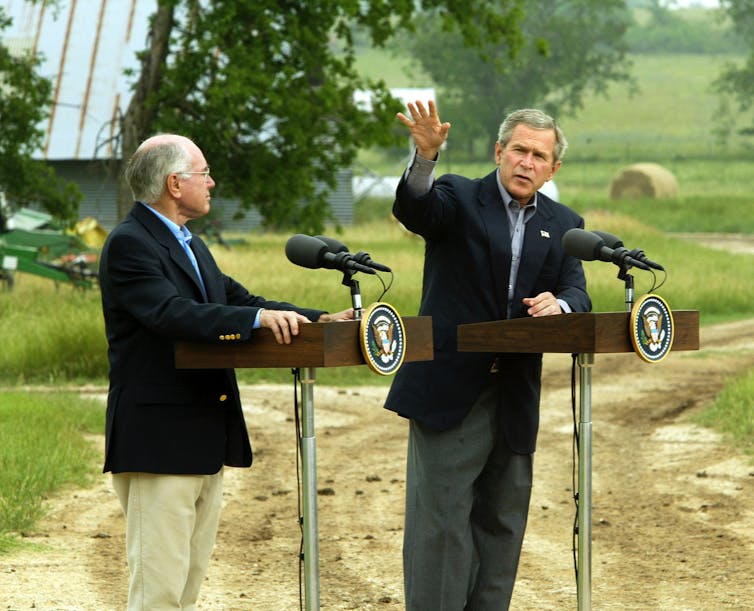
J. Scott Applewhite/AP/AAP
Officials in the Department of Defence and Foreign Affairs and Trade did not regard it as their role to offer strategic advice on matters already decided by ministers. This pattern of policy-making indicated the increasing subordination of the public service to ministers since the 1980s. It also reflected the increasingly presidential view Howard had of the office of prime minister.
In 2003, public opinion was opposed to Australian participation in the war. However, the government was aided by the effusive support of News Corporation papers for its position on the war.
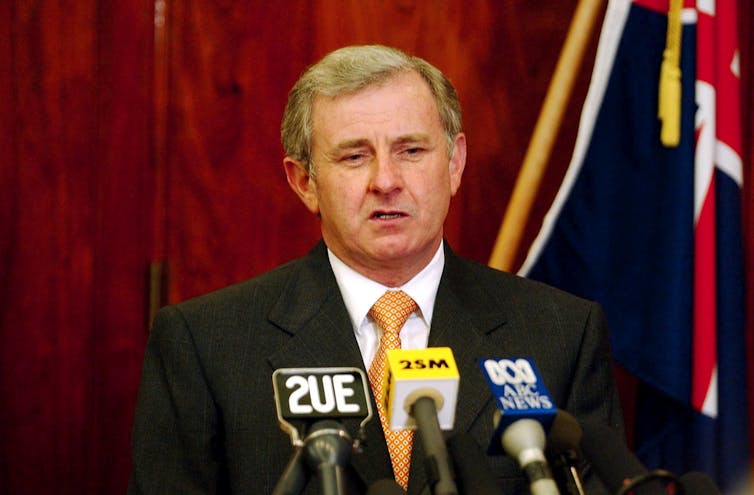
Mick Tsikas/AAP
Beyond the war
The release includes many other submissions and decisions. Some relate to negotiation of a free trade agreement with the United States.
Ten years after the agreement came into force, however, analysis showed it had diverted trade away from the lowest-cost sources. The Pharmaceutical Benefits Scheme was also affected.
How the US trade deal undermined Australia’s PBS
Other papers relate to health policy. Howard sought to blunt an effective Labor campaign against the erosion of the rate of bulk-billing under Medicare. Accordingly, Health Minister Kay Patterson introduced a A$900 million package.
“A Fairer Medicare” was highly criticised, including by a Senate inquiry. It described the package as a “decisive step away from the principle of universality that has underpinned Medicare since its inception”.
With the 2004 election looming, Patterson was replaced by Tony Abbott, who later announced a compromise package called Medicare Plus. It achieved more success by including higher reimbursements for doctors and an extended Medicare safety net aimed at addressing out-of-pocket costs.
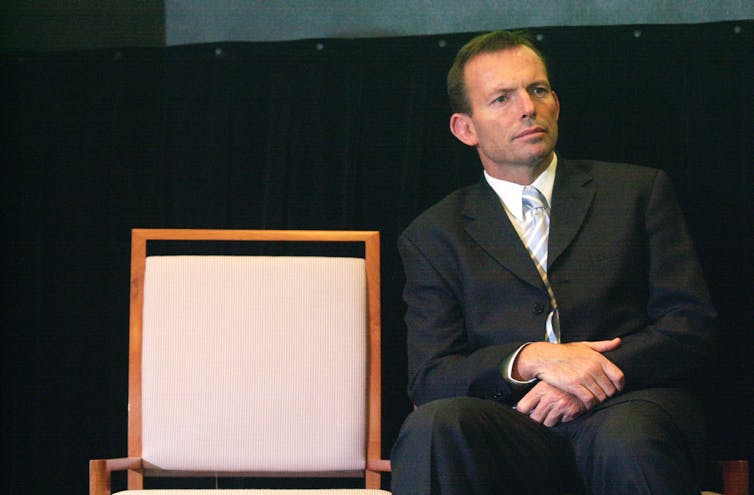
Alan Porritt/AAP
A decision on the environment is also noteworthy. Howard appointed a committee to devise an affordable long-term plan to reduce Australia’s greenhouse gas emissions. An emissions trading scheme was recommended.
The plan received the backing of the Department of the Prime Minister and Cabinet, as well as that of Treasurer Peter Costello, Industry Minister Ian Macfarlane and Environment Minister David Kemp. In July, the strategy was taken to cabinet but later, after discussions with industry representatives, Howard dumped it.
Years later, in 2006, under pressure from the “millennium drought”, Howard changed his mind and accepted Treasury’s advice to adopt an emissions trading scheme. Howard’s Labor successors, Kevin Rudd and Julia Gillard, implemented the scheme. In 2013, the Abbott government demolished the scheme with the enthusiastic support of business.
The too hard basket: a short history of Australia’s aborted climate policies
Resources boom – and missed opportunities
In October 2003, the leaders of the United States and China both visited Australia. This offered hope Australia could maintain a constructive relationship with its closest ally as well as its major trading partner.
By 2003, Australia was on the cusp of one its greatest resource booms, fuelled by Chinese demand. The boom gave the government space to turn its attention to a range of reforms in areas such as defence, health, communications and education policy.
Three opportunities were missed in 2003.
One was to establish a sovereign wealth fund to invest the temporary windfall gains from the mining boom.
A second was to establish an emissions trading scheme.
A third was to advance progress on constitutional recognition of Indigenous people.
This had to wait until 2007 when Howard at last recommended a referendum to recognise the role of Aboriginal and Torres Strait Islanders in Australian history.

